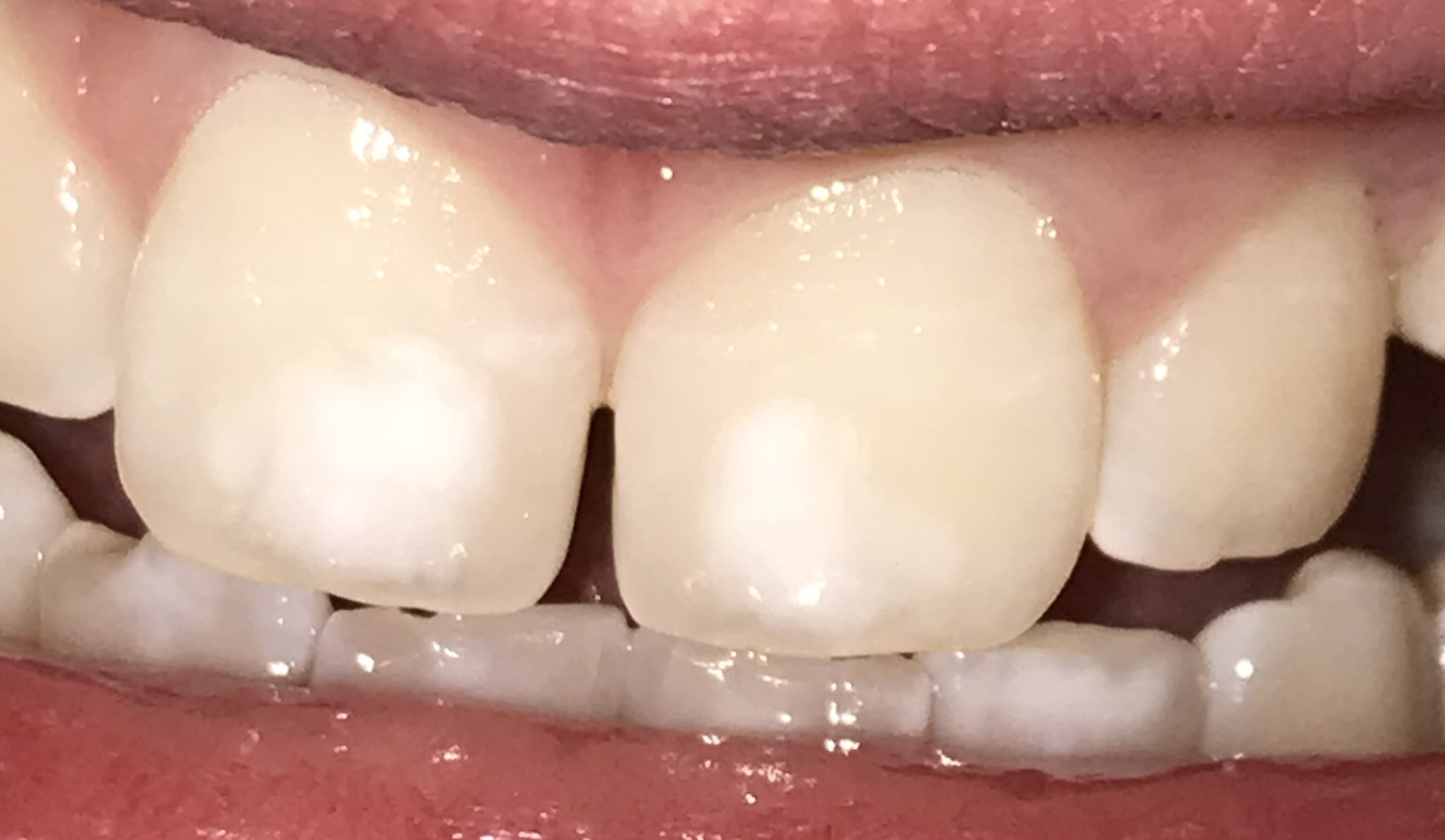Dental fluorosis
- dental fluorosis is a developmental disturbance of enamel which occurs during enamel forming (1)
- caused by systemic overexposure to fluoride during the first six years of life, when the enamel of the crowns of permanent teeth is formed
- enamel contains more protein, is porous, opaque and less transparent
- enamel fluorosis and primary dentin fluorosis can only occur when teeth are forming, and therefore fluoride exposure (as it relates to dental fluorosis) occurs during childhood
- in the permanent dentition, this would begin with the lower incisors, which complete mineralization at approximately 2-3 years of age, and end after mineralization of the third molars
- in the permanent dentition, this would begin with the lower incisors, which complete mineralization at approximately 2-3 years of age, and end after mineralization of the third molars
- clinical manifestation vary from narrow, white horizontally running lines, larger patches or yellow to light brown colored areas of porous enamel, to (qualitative) loss of enamel in varying degrees
- caused by systemic overexposure to fluoride during the first six years of life, when the enamel of the crowns of permanent teeth is formed

Treatment of dental fluorosis:
- treatments for fluorotic teeth are limited
- mildest forms of fluorosis - bleaching may be recommended
- moderate dental fluorosis include microabrasion, where the outer affected layer of enamel is abraded from the tooth surface in an acidic environment
- severe fluorosis - options include composite restorations combined with microabrasion or application of aesthetic veneers
- in some very severe cases - prosthetic crowns may be necessary
Use of fluoride toothpaste in children:
For the optimal effect of fluoride toothpaste, it is important to follow recommended guidelines for the use of products containing fluorides - Recommended use of fluoride toothpaste for children. Source: European Academy of Paediatric Dentistry (EAPD), 2009.
Age | Fluoride concentration | Daily use | Daily amount |
6 months-2 years | 500 ppm | 2x | pea size |
2-6 years | 1000 ppm | 2x | pea size |
6 years and over | 1450 ppm | 2x | 1-2 cm |
In this way, the probability for fluorosis is decreased and the protective effect of fluoride on the development of caries is significantly important.
Notes:
- in England, around 10% of the population receives public drinking water served by a fluoridation scheme (4)
- water fluoridation schemes aim to achieve a level of 1mg of fluoride per litre of water
- World Health Organization (WHO) guidance recommends a maximum concentration of fluoride in public water supplies of 1.5mg/l, this being protective against any known harmful effect over a lifetime of consumption
- in the most deprived 20% of areas, the chance of 5 year old children having cavities was 25% lower in areas with a fluoridation scheme than in areas without
- 5 year olds in areas with higher fluoride concentrations were less likely to experience dental cavities than in areas with low fluoride concentrations
- up to 56% of hospital admissions for the removal of decayed teeth among children and young people could be prevented in the most deprived areas through water fluoridation scheme
Reference:
- Denbesten P, Li W. Chronic fluoride toxicity: dental fluorosis. Monogr Oral Sci. 2011; 22: 81-96. doi: 10.1159/000327028.
- Wong MCM, Clarkson J, Glenny AM, Lo ECM, Marinho VCC, Tsang BWK, et al. Cochrane reviews on the benefits/ risks of fluoride toothpastes. J Dent Res. 2011; 90(5): 573-9. doi: 10.1177/0022034510393346
- European Academy of Paediatric Dentistry. European Archives of Paediatric Dentistry. Guidelines on the use of fluoride in children: an EAPD policy document; 2009. http://www.eapd.eu/dat/82C0BD03/file.pdf
- Office for Health Improvement and Disparities (within Department of Health and Social Care). Water fluoridation: health monitoring report for England 2022
Create an account to add page annotations
Add information to this page that would be handy to have on hand during a consultation, such as a web address or phone number. This information will always be displayed when you visit this page